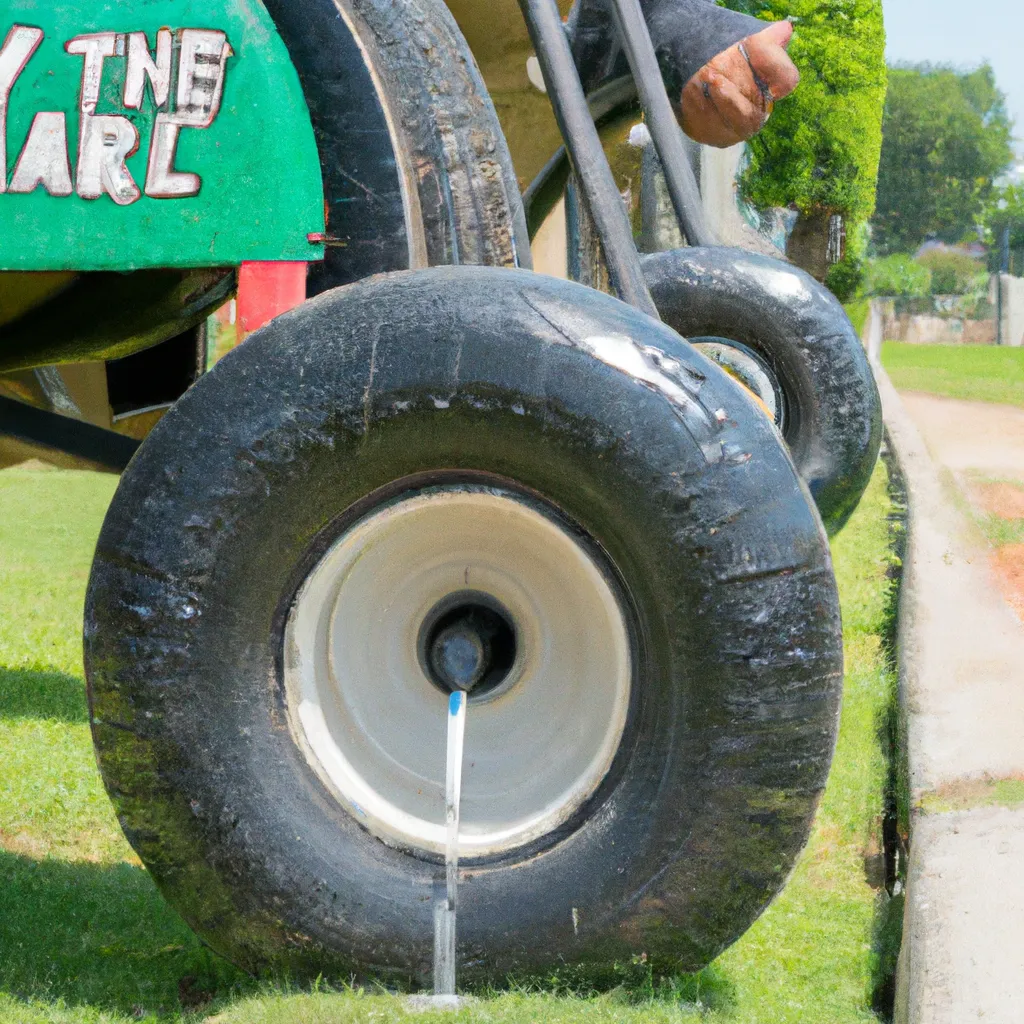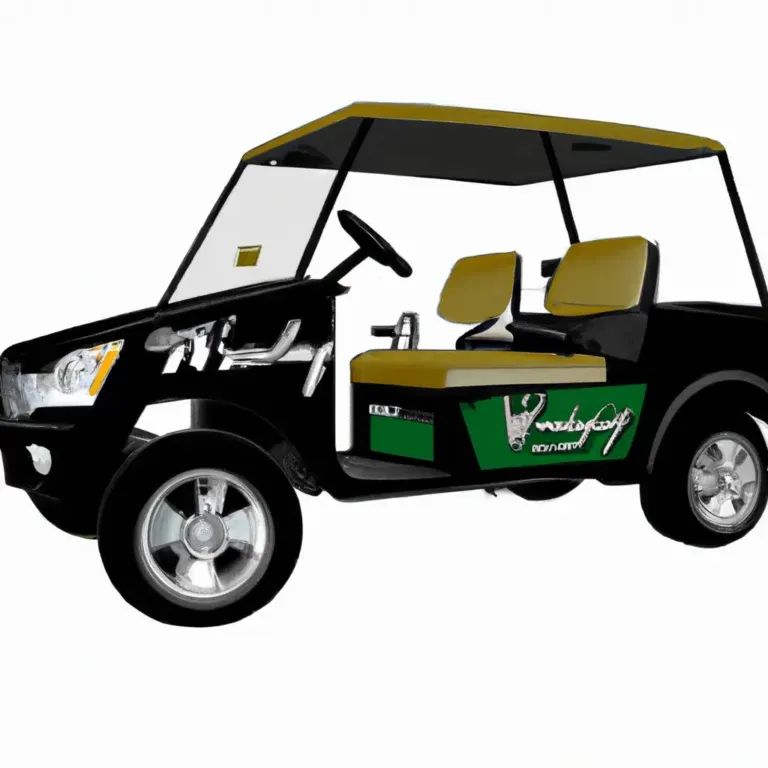Tubeless Golf Cart Tires: Strong, Safe, And Easy To Fix!
If you’ve ever had to deal with a flat tire on your golf cart, you know how frustrating it can be. Not only does it disrupt your game or work, but it can also be time-consuming and costly to repair.This is where tubeless golf cart tires come in, offering a solution that is not only strong and safe but also easy to fix.
Take, for example, the case of John, a golf course manager who recently made the switch to tubeless tires on his carts. He noticed a significant improvement in the performance and durability of the tires, as well as a decrease in the number of flat tire incidents.
With tubeless tires, there are no tubes to puncture or leak, which means fewer opportunities for damage. Plus, if a tire does get damaged, it can often be repaired quickly and easily without having to remove the entire tire from the rim.
These advantages make tubeless golf cart tires a smart choice for anyone looking to improve the reliability and efficiency of their golf cart.
Key Takeaways
– Tubeless golf cart tires are designed to be strong and handle damage, and are almost always tubeless.– Tubeless tires don’t have a separate inner tubing and have advantages over tubed tires, including increased safety during punctures, gentler deflation cycle, and easier to fix.
– Tubeless tires for golf carts come in a wide variety of sizes and tread patterns, have grips that make it easier to ride on various areas, and are much better for golf carts that may be riding on rough terrain.
– Understanding tubeless tires helps keep your golf cart in good shape, means knowing that they are a pneumatic tire that does not have a separate inner tubing, and means knowing that they are forced to seal up alongside the tire and keep it strong.
Design and Function
You might be thinking that tubeless tires are more expensive and difficult to replace, but in fact, they offer many advantages over tubed tires.Tubeless tires don’t have a separate inner tubing and instead have continuous ribs that fit to the interior and seal up alongside the tire. This design makes them stronger and more resistant to punctures, which is especially important for golf carts that may be riding on rough terrain.
Tubeless tires also have a gentler deflation cycle, meaning they don’t deflate as rapidly as tubed tires, which can prevent sudden loss of control while driving. Additionally, if a tubeless tire does get punctured, it’s easier to fix.
The sealant inside the tire can often repair the puncture on its own, and if not, a simple plug or patch can be applied without having to remove the tire from the wheel.
Overall, tubeless tires are the safer and more convenient choice for your golf cart.
Advantages over Tubed Tires
Opting for tubeless tires for your golf cart can provide several benefits. They are safer during punctures, have a gentler deflation cycle, and are easier to repair. Tubeless tires also have a lower risk of bursting than tubed tires and are better for golf carts that ride on rough terrain.Tubeless tires have continuous ribs that fit to the interior and seal up alongside the tire, making them much better for safety during punctures. Their gentler deflation cycle means they lose air more slowly than tubed tires, making them easier to control if you have a flat. Repairing or replacing a tubeless tire is also much easier than with tubed tires.
Overall, choosing tubeless tires for your golf cart is a smart choice for safety and ease of maintenance.
Replacing Tubeless Tires
When it’s time to replace your worn-out golf cart tire, you’ll need to prepare a flat and clean area and gather the necessary tools like a floor jack, socket, ratchet wrench, and a replacement tire, just like a surgeon prepares their operating room and tools for a delicate procedure.First, jack up the cart off the floor and remove the lug nuts with the ratchet wrench.
Then, pull off the old tire carefully and inspect the area around the axle for any dirt or debris that could interfere with the new tire’s placement.
Once you have your new tubeless tire, carefully place it on the axle and tighten the lug nuts with the ratchet wrench.
Lower the jack and test the cart to ensure that the new tire is riding smoothly.
If the wheel feels wobbly or doesn’t ride smoothly, stop driving and seek expert help.
Remember, with the right tools and knowledge, anyone can replace a tubeless golf cart tire.
Frequently Asked Questions
How often should tubeless golf cart tires be replaced?
Tubeless golf cart tires should be replaced when the tread depth reaches 2/32 of an inch or when there are visible cracks, bulges, or punctures. Regularly inspecting your tires and keeping them properly inflated can extend their lifespan.
Can tubeless tires be used on all types of golf carts?
You may wonder if tubeless tires work for all golf carts. The answer is yes! Tubeless tires are suitable for all types of golf carts and offer better safety during punctures.
Are there any downsides to using tubeless tires on a golf cart?
Yes, there are some downsides to using tubeless tires on a golf cart. They are more expensive and require more work to replace, but the benefits of increased safety during punctures and gentler deflation cycle outweigh the downsides.
Can tubeless tires be repaired if they get a small puncture?
Yes, tubeless tires can be repaired if they get a small puncture. You can use a tire plug or patch kit to fix the puncture, but it’s important to address it quickly to prevent further damage.
How do tubeless tires compare in terms of cost to tubed tires for golf carts?
Tubeless tires for golf carts are generally more expensive than tubed tires, but the benefits outweigh the cost. They are safer during punctures, have a gentler deflation cycle, and are easier to fix.



